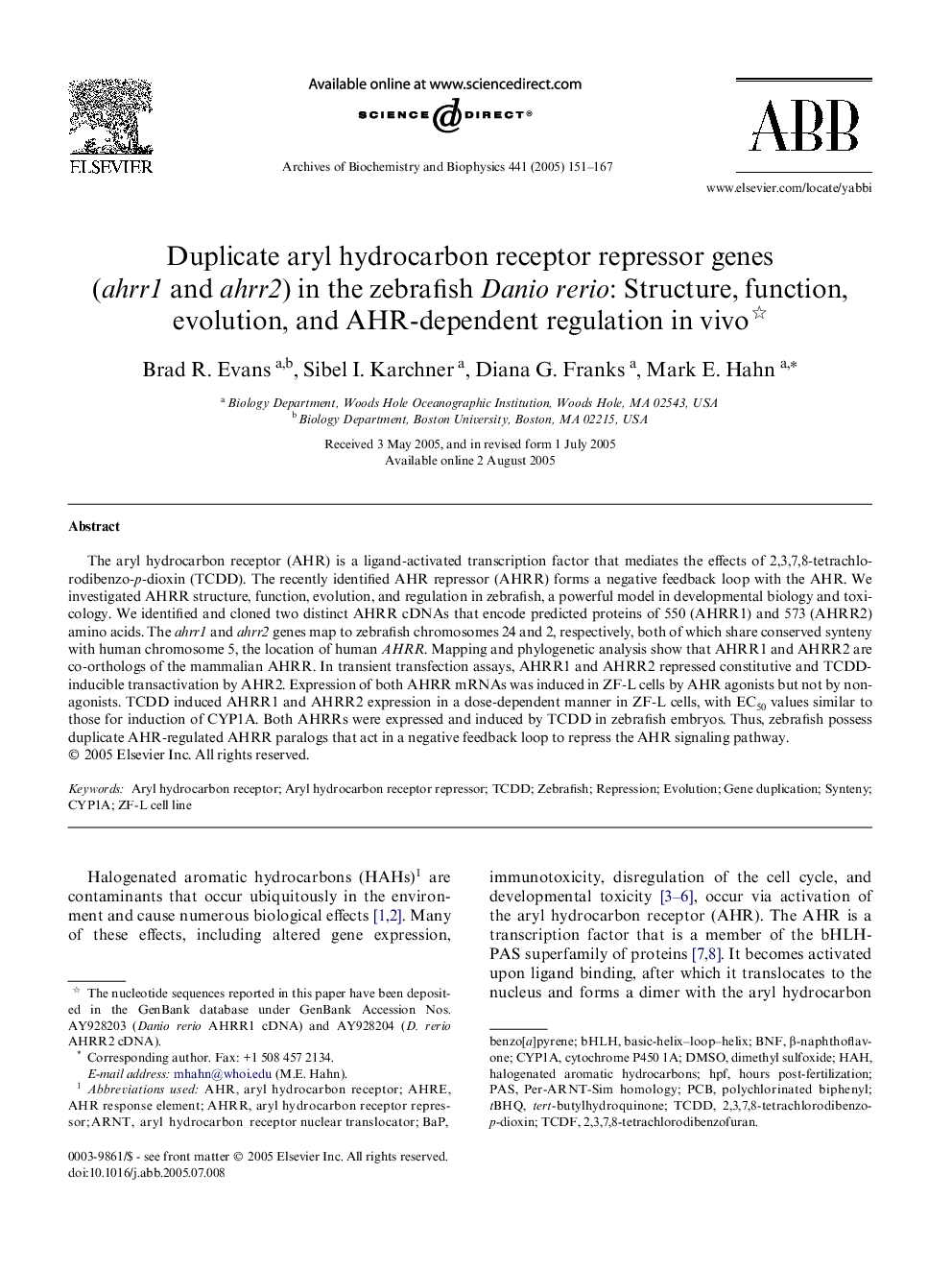| Article ID | Journal | Published Year | Pages | File Type |
|---|---|---|---|---|
| 9882124 | Archives of Biochemistry and Biophysics | 2005 | 17 Pages |
Abstract
The aryl hydrocarbon receptor (AHR) is a ligand-activated transcription factor that mediates the effects of 2,3,7,8-tetrachlorodibenzo-p-dioxin (TCDD). The recently identified AHR repressor (AHRR) forms a negative feedback loop with the AHR. We investigated AHRR structure, function, evolution, and regulation in zebrafish, a powerful model in developmental biology and toxicology. We identified and cloned two distinct AHRR cDNAs that encode predicted proteins of 550 (AHRR1) and 573 (AHRR2) amino acids. The ahrr1 and ahrr2 genes map to zebrafish chromosomes 24 and 2, respectively, both of which share conserved synteny with human chromosome 5, the location of human AHRR. Mapping and phylogenetic analysis show that AHRR1 and AHRR2 are co-orthologs of the mammalian AHRR. In transient transfection assays, AHRR1 and AHRR2 repressed constitutive and TCDD-inducible transactivation by AHR2. Expression of both AHRR mRNAs was induced in ZF-L cells by AHR agonists but not by non-agonists. TCDD induced AHRR1 and AHRR2 expression in a dose-dependent manner in ZF-L cells, with EC50 values similar to those for induction of CYP1A. Both AHRRs were expressed and induced by TCDD in zebrafish embryos. Thus, zebrafish possess duplicate AHR-regulated AHRR paralogs that act in a negative feedback loop to repress the AHR signaling pathway.
Keywords
Related Topics
Life Sciences
Biochemistry, Genetics and Molecular Biology
Biochemistry
Authors
Brad R. Evans, Sibel I. Karchner, Diana G. Franks, Mark E. Hahn,
